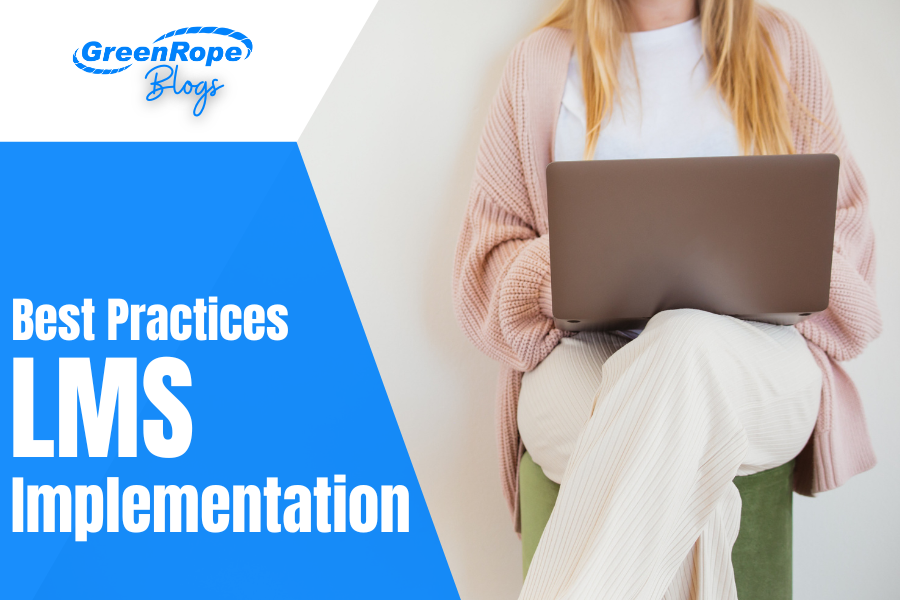GreenRope Blog
Title search: ✖
|
Show All (637)
#CoolerChat (7) All About GreenRope (172) Content Marketing (66) CRM (191) Customer Experience (79) Digital Transformation (8) Email Marketing (6) Event Recaps (2) Everything Small Business (46) How-To (136) In the Clearing with Lars (25) Infographics (4) Marketing (149) Marketing Automation (60) Monthly Updates (26) Press Release (1) Sales (76) SMB (140) Social Media (20) Tidbits for You (116) Websites & SEO (4) Weekly Roundup (16)
10 Surprising Things You Didn't know about Client Services & Search Marketing Manager, Lisa Frampton
Disqualifying Leads Without Alienating Them as Future Customers - Part 2: Cultivating Non-Leads with Automated Marketing
4 Ways to Get Your Email Marketing in Front of the Right Audience Through Personalization & Segmentation
Total Cost of Ownership: What does it mean and how can you avoid costly, unsuccessful implementations.
|
Best Practices for LMS ImplementationLearning Management Systems (LMS) have revolutionized the way education and training are delivered. Platforms like GreenRope’s LMS, provide an efficient and effective means of organizing, managing, and delivering learning content to learners across diverse settings. However, successful LMS implementation requires careful planning, execution, and ongoing evaluation. In this blog, we will explore the best practices for LMS implementation, empowering organizations and educational institutions to maximize the benefits of this powerful technology. 1. Define Clear Objectives and Stakeholder Involvement: Before embarking on LMS implementation, it is crucial to clearly define the objectives and expected outcomes. Identify the key stakeholders involved, including administrators, instructors, learners, and IT personnel. By involving all relevant parties from the outset, you can gain valuable insights, align expectations, and foster a sense of ownership and collaboration throughout the implementation process. 2. Conduct a Needs Analysis: A comprehensive needs analysis is essential to identify the specific requirements and challenges of your organization or institution. Consider factors such as the size of the user base, the type of content to be delivered, integration with existing systems, scalability, and technical infrastructure. By conducting a thorough needs analysis, you can select an LMS that aligns with your unique requirements and ensures a seamless implementation. 3. Select the Right LMS: Choosing the right LMS is crucial to the success of your implementation. Consider factors such as user-friendliness, scalability, customization options, reporting and analytics capabilities, mobile compatibility, and security features. Evaluate different LMS platforms, request demos, and seek input from key stakeholders. Additionally, ensure that the LMS vendor provides reliable technical support and regular updates to address any potential issues that may arise. 4. Develop a Comprehensive Implementation Plan: A well-structured implementation plan is absolutely key when it comes to a smooth and successful launch. The plan should include a detailed timeline, clearly defined roles with specific responsibilities, and a detailed training strategy for all administrators, instructors, and students. Make sure you allocate sufficient time for data migration, content creation, system configuration, and testing. Regularly communicate the implementation plan to all stakeholders, keeping everyone informed and engaged throughout the entire process. 5. Provide Adequate Training and Support: Comprehensive training is essential to help users navigate and utilize the LMS effectively. Provide training sessions tailored to the needs of different user groups, offering both in-person and online training options. Additionally, establish a support system that enables users to seek assistance when encountering challenges or technical issues. Regularly update training materials and documentation to ensure users have access to up-to-date resources. 6. Promote User Adoption and Engagement: Encouraging user adoption and engagement is key to the success of your LMS implementation. Implement strategies to foster a positive learning culture, such as recognizing and rewarding active participation, creating interactive and engaging content, and facilitating peer collaboration through discussion forums and virtual classrooms. Continuously solicit feedback from users and make adjustments based on their input to enhance their learning experience. 7. Ensure Data Security and Privacy: With the increasing importance of data security and privacy, it is crucial to safeguard sensitive information within your LMS. Implement robust security measures such as secure authentication protocols, data encryption, and regular backups. Comply with relevant data protection regulations, such as the General Data Protection Regulation (GDPR) or the California Consumer Privacy Act (CCPA), to protect user data and maintain trust. 8. Continuous Evaluation and Improvement: LMS implementation is an ongoing process, and it is essential to continuously evaluate its effectiveness and make necessary improvements. Monitor user feedback, track key performance indicators, and conduct periodic assessments to measure the impact of the LMS on learning outcomes. Regularly update and refine your implementation plan based on insights gained from evaluation, ensuring that your LMS aligns with evolving needs and technological advancements.
Implementing an LMS, like the one offered by GreenRope, holds great potential to enhance learning experiences and improve organizational efficiency. By following the best practices outlined in this blog, you can ensure a successful implementation that maximizes the benefits of your LMS. From clear objective setting to stakeholder involvement, careful needs analysis, and continuous evaluation, these practices empower you to harness the power of technology to create a dynamic and engaging learning environment in the digital era. |

